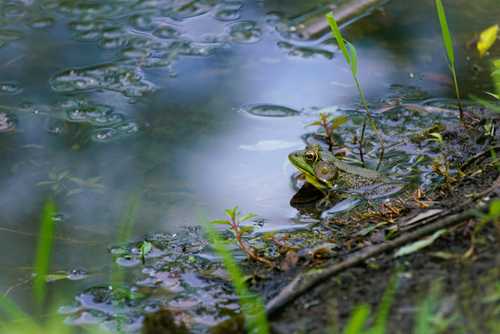
What is bioacoustics? Definition and examples
The study of animals’ (including humans’) production, transmission, and reception of sounds, bioacoustics is a cross-disciplinary science combining biology and acoustics. As of 2013, ecologist Monica Gagliano expanded the remit of bioacoustics to include plantlife. (Alternatively, in ocean sciences ‘bioacoustics’ is used to describe the mapping of organisms in the sea with sonar.)
By increasing understanding about wildlife diversity, behavior, and habitat health, bioacoustics can benefit scientists, researchers, and government agencies. More specifically, bioacoustics can increase understanding of the evolution of acoustic mechanisms, on the basis of neurophysiological (electrical/biochemical processes that occur in the nervous system) and anatomical sound production and detection.
The definition of ‘sounds’ within this field is broader than the typical usage: acoustic waves which travel through air and are audible to humans. Bioacoustics addresses sounds which are also lower or higher in frequency than those which we ourselves can hear, including low frequency vibrations which may not even be detected by the hearing organs of the animals which produce them – such as elephants’ ground vibrations, which are detected through their feet. The sonic signals studied within bioacoustics are similarly diverse, ranging from the “vibration of the wings in fruit flies […] to stridulation in crickets, snapping of the swimbladder in fish, [or] tongue clicks in some bats”.
Bioacoustics forms part of the broader discipline of soundscape ecology, which also includes environmental acoustics – that is, the study of the ways in which sound is carried through the landscape. Ecoacoustics, by contrast – another emerging interdisciplinary field – is concerned with “the ecological relevance of environmental sounds”. Within bioacoustics itself, areas of study may include communication and related behavior, impacts of noise, and bioacoustical sound structures, patterns, variations, and repertoires.
Slovenian biologist Ivan Regen is considered the originator of the discipline. In the 1920s, by studying katydid and cricket stridulation, he was able to prove that insects respond to acoustic stimuli made by other individuals, and established that they hear with the tympanal organ, a special hearing organ positioned on the first pair of legs.
At that time, the technology available to scientists (like phonographs) was crude; only when electronic advancements led to the development of devices like oscilloscopes and digital recorders did more accurate measurements become possible. A range of specialized equipment may now be used according to particular environments – eg, hydrophones (for underwater sounds), ultra- or infrasound detectors (for very high- or very low-frequency sounds, respectively), and laser vibrometers (for vibrational signals carried through substrate). Recordings (including archive recordings) can be analyzed and sorted by sound-editing software according to criteria such as intensity, frequency, and duration.
Bioacoustic practitioners have always been interested in the physical properties of organs connected to sound production and detection, as well as in behavioral responses to acoustic signals. However, more recently the field has also come to take into account the relationship between animals, their acoustic environment, and the impact of anthropogenic noise (which “is becoming more prevalent across all habitats”, disrupting animals’ ability to detect and distinguish between important signals).
Scientists involved in bioacoustic research may carry out fieldwork to record specific species’ acoustic signals, or use passive acoustic monitoring to gather audio data across longer periods. Conducting such research has various applications within conservation – for example, establishing the presence of particular species in given locations; monitoring threatened species; investigating migration patterns and habitat use; investigating ecosystems recovery after disturbances such as forest fires or logging; and producing data which can support the planning and development of conservation strategies.
To give an example of the utility of bioacoustics, in addition to the nearly 8,800 species of amphibians currently recognised (an increase of more than 60% since 1985), “new species are being described at an average rate of one every second day”. Since morphological similarities between these species can make visual identification challenging, bioacoustic analysis can help to facilitate species discovery in this context. Given that amphibians are “the most threatened group of vertebrates on the planet”, any advantage that can allow greater understanding of species within this biological class may allow them to be better protected.
Featured photo by Chris Hunter on Unsplash
Earth.fm is a completely free streaming service of 1000+ nature sounds from around the world, offering natural soundscapes and guided meditations for people who wish to listen to nature, relax, and become more connected. Launched in 2022, Earth.fm is a non-profit and a 1% for the Planet Environmental Partner.
Check out our recordings of nature ambience from sound recordists and artists spanning the globe, our thematic playlists of immersive soundscapes and our Wind Is the Original Radio podcast.
You can join the Earth.fm family by signing up for our newsletter of weekly inspiration for your precious ears, or become a member to enjoy the extra Earth.fm features and goodies and support us on our mission.
Subscription fees contribute to growing our library of authentic nature sounds, research into topics like noise pollution and the connection between nature and mental wellbeing, as well as funding grants that support emerging nature sound recordists from underprivileged communities.
